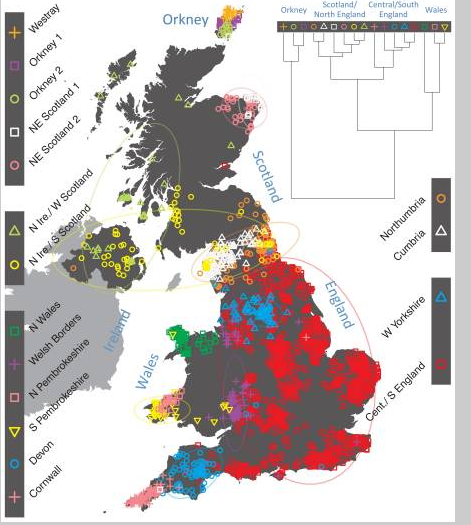Christianity has historically helped to spread monogamy, exogamy, and consensual marriage around the world. None of these practices, though, originate in the Bible. They are all European traits which have piggybacked on to the Catholic Church. Where, exactly, do they come from? 

In 1539 Philip of Hesse wrote to Martin Luther, asking him if bigamy was Biblically permissible. His first wife was ugly, smelly and drunk but these were then not grounds for divorce. Luther wrote back, admitting that "God not condemn polygamy.. but even seemed to countenance it”




Luther was not misinterpreting the Old Testament. Abraham, Jacob, Saul, David, and Solomon all married polygamously. The Bible only regulates the practice: a man cannot neglect his first wife, marry her sister, or prioritize children of his favorite wife in his inheritance.




Most historic societies practiced polygamy, and even those typically classified by anthropologists as monogamous often openly tolerated concubinage among kings and aristocrats. For much of history the Western insistence that _everyone_ marry monogamously may have been unique. 

Greek city states were resolutely monogamous from the beginning, as was Rome. That polygamy survived so long in the Kingdom of Macedon can be taken as evidence that the polis itself, with its insistence on the equality of citizens, was the ultimate origin of Western monogamy. 

Early Christianity’s cousin marriage ban though is adamantly not Greek. If a Greek girl was her father’s only heir the law required her to marry a male relative. In their wills both Aristotle and Demosthenes ordered their surviving daughters to marry their first cousins. 

The ban, like monogamy, is also not Biblical. When the Catholic Church attempted to impose exogamy on the early Irish their learned monks resisted by quoting the story of Salphaad. To preserve clan lands God orders his daughters to marry paternal cousins, as is the Semitic custom 

This same practice appears elsewhere in the Old Testament. In Numbers, God commands through Moses: “Every daughter who inherits land in any Israelite tribe must marry someone in her father’s tribal clan. No inheritance in Israel is to pass from one tribe to another.” 

The Western cousin marriage ban is Roman in origin. This insistence on exogamy was present from its earliest history. Although cousins were off limits, potential partners in practice came from a very restricted number of allied families: a “marry go round” as Ann Harders says. 

With time, the legal restrictions on cousin marriage were loosened in Rome, so much so that the emperor Claudius was able to marry his niece. All the same, St. Augustine wrote "in our time the customary morality has prevented this from being frequent, though the law allows it". 

Saller and Shaw confirmed Augustine’s observation by examining the few remaining aristocratic Roman family trees (stemmata). Of their little sample of 47, none show direct evidence of consanguinity even though the law at this point would clearly have permitted it. 

47 is a small sample. But in the smaller sample of 30 marriages discovered on one vast mausoleum in Roman Lycia by Thonemann, 8/30 were between close kin. This custom was widespread throughout Anatolia and it conformed to the modern "Muslim" FBD type. The true Romans were WEIRD. 

The Romans though, were not the source of the most revolutionary aspect of the Western family: the freedom of the couple to marry without parental consent. The Roman father could forbid his children to marry, divorce or even murder them without penalty.
https://twitter.com/crimkadid/status/1747080501586808960
Unsurprisingly, this unusual freedom also does not come from the Bible. Paul writes that a father who "hath so decreed in his heart that he will keep his virgin, doeth well"..."So then he that giveth her in marriage doeth well: but that giveth her not in marriage doeth better" 

A clue to the origin of free marriage can be seen in the Church’s awkward attempt to ban cousin marriage. Whereas before 1076 marriage had been forbidden within 7 Roman degrees of kinship (2nd cousins) it would now be measured within 7 Germanic degrees (7th cousins).




The Church formulated its modern position, that consent alone makes a marriage, in the 12th century. Germanic customary law was then in effect across most of western Europe. A majority of first names were then still Germanic, even in Iberia and Italy.
https://twitter.com/crimkadid/status/1595182727615205382
Before the 10th century parish churches did not exist across Europe. Almost no one was married in a church or part of a congregation. And yet though Christian influence was very weak, the principle of consent was already then widespread in Germanic Europe
https://twitter.com/crimkadid/status/1747081272696979662
Christians take pride that in their religion, women walk about freely unveiled. But this again is not really a Christian but a European custom. In 19th century Armenia not only did women wear veils but after marriage they ceased to speak with all men, even their own fathers.




In the European Mediterranean women generally did not wear veils but neither were they supposed to be seen in public, even in the company of their husbands. What today have become “Muslim” gender mores were historically just “Mediterranean”. 

Christianity really has helped to spread monogamy, exogamy, and consensual marriage around the world. It just needs to be understood that Christianity, as actually practiced, is a European religion and European cultural assumptions are built into its foundations.
• • •
Missing some Tweet in this thread? You can try to
force a refresh

















